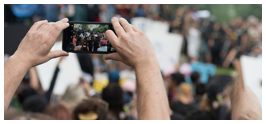White smoke billowed from the Sistine Chapel chimney late Thursday afternoon, signaling that the College of Cardinals has successfully elected the 267th pope of the Catholic Church during the second day of the conclave.
The smoke appeared shortly after the fourth ballot of the conclave, following an earlier round of voting Thursday morning that ended inconclusively.
The decisive vote came after two days of intense discernment and prayer, marking a moment of global significance for the world’s 1.4 billion Catholics.
Crowds in St. Peter’s Square erupted in applause and cheers as the white plume emerged at approximately 6:07 p.m. Rome time. The bells of St. Peter’s Basilica rang out shortly after, confirming the election.
According to Vatican protocol, the identity of the new pope will be announced soon with the traditional Latin declaration “Habemus Papam” from the central balcony of the basilica.
The election came after rounds of voting—one on Wednesday and three more on Thursday—inside the Sistine Chapel, where 133 cardinal electors were secluded from the outside world.
Each was required to swear an oath of secrecy and vote in silence beneath Michelangelo’s frescoes, seeking guidance from the Holy Spirit.
Earlier in the day, black smoke at 11:50 a.m. indicated no result from the third ballot. But anticipation remained high as cardinals returned for the afternoon session.
Some 15,000 people had gathered in St. Peter’s Square by Thursday morning.
The new pontiff succeeds Pope Francis, who died on April 21 after a 12-year papacy marked by global outreach, reform efforts, and pastoral concern for the marginalized.
The conclave that followed was the most internationally diverse in Church history, with electors from nearly 70 countries.
While the identity and background of the new pope remain to be officially announced, the Church now prepares to receive its new shepherd, who will lead amid challenges including doctrinal divisions, the clerical abuse crisis, geopolitical uncertainty, and declining church participation in the West.









